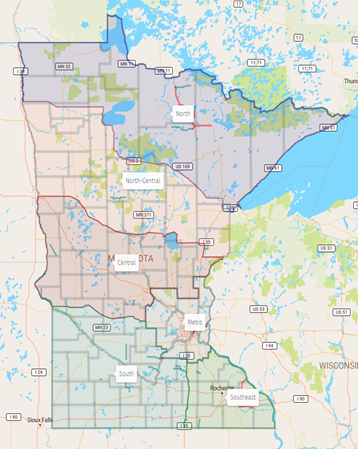The Minnesota Department of Transportation (MnDOT) has begun announcing start dates for spring load restrictions across the state. Anyone involved in spring construction projects in Minnesota has experience with this annual event, which dates back to the 1930s. These restrictions aim to preserve roads during the spring thaw when they are most vulnerable to damage from heavy vehicles. 
This year, a winter filled with record high temperatures has caused MnDOT to announce spring load restrictions a few weeks earlier than usual. The restrictions took effect on February 26th in the Twin Cities Metro and in the Southern and Southeastern regions of the state. Restrictions go into effect on March 1st in the Central region and on March 6th in the North-Central region of the state. MnDOT has yet to announce the start date for the North region. Announcements about start and end dates and a variety of other information about seasonal load restrictions can be found on MnDOT’s website.
For those who do not closely monitor MnDOT’s website, Minnesota law requires local and state authorities to post signs on roads subject to spring load restrictions (Minn. Stat. § 169.87, Subd. 1). Many Minnesotans recognize these temporary signs with the words “maximum load per axle” as one of the signs of spring.
The default load limits during the restricted period are 5 tons per axle on unpaved roads and 10 tons per axle on paved streets and highways (Minn. Stat. § 169.87, Subd. 2). The restrictions typically last six to eight weeks.
Absent a special permit or one of the exceptions that apply to vehicles including school buses and garbage trucks, state law provides for a variety of penalties for truck drivers and their employers who violate spring load restrictions. These penalties include being charged with a misdemeanor, civil penalties, and even potentially being held liable for the cost to repair any roadway damaged by an overweight load (Minn. Stat. § 169.89, Minn. Stat. § 169.871, Minn. Stat. § 169.88). Those wishing to avoid mishaps like these this spring should obtain approvals from local and state authorities before driving an overweight vehicle on a restricted road—and watch out for those temporary road signs.


